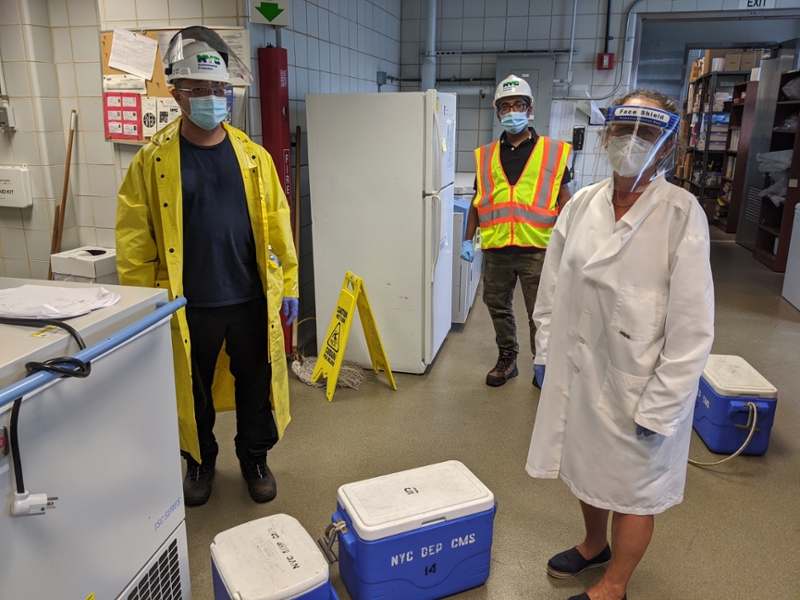Finding Covid-19 in the Water
Queensborough research helps identify elusive asymptomatic virus carriers
Monica Trujillo maneuvered her car through Tropical Storm Isaias’ high winds and relentless, determined to uncover more about COVID-19 and its lasting widespread impact on New York City and Westchester County.
The bacterial specialist and Associate Professor at Queensborough Community College was gathering liters full of deep-well influx wastewater from local treatment facilities, including Newtown Creek between Queens and Brooklyn. She and colleagues from Queens College and The New School are testing samples for the SARS-CoV-2 virus as the city tries to better understand how communities are being affected by the deadly disease.
“We are looking for evidence of varying infection rates among different neighborhoods to understand the environmental and societal conditions that influence the transmission of the virus,” Dr. Trujillo said, enroute to Newtown Creek.
“This method will help provide public health and other officials an overall view of the spread of COVID-19 because we are able to measure and calculate approximately how many people are infected, including those elusive asymptomatic carriers since everyone contributes to wastewater – this is very powerful research and of huge interest to everyone,” she said.

Queensborough Community College Associate Professor Dr. Monica Trujillo (right) is looking for evidence of COVID-19 in New York City area wastewater. Dr. Trujillo retrieved samples from the Newtown Creek Wastewater Treatment Plant in Greenpoint, Brooklyn, in early August.
The project was initiated in May with the New York City Department of Environmental Protection and the Westchester County Department of Environmental Facilities. Weekly sampling from their combined 21 sewage treatment plants and testing will likely continue through 2021.
Dr. John Dennehy and colleagues at Queens College and Dr. Trujillo are processing the specimens. The testing uses RT-qPCR, a technique that allows the detection of the SARS-CoV-2 RNA or genetic information. Dr. Davida Smyth, at The New School, is sequencing the positive samples.
The preliminary results of their collaborative research has allowed the team to detect the presence of the virus in most samples obtained from the NYC DEP.
“We expect that, as we look deeper and longer at the data, we can begin to form some theories about each community based on our findings at each facility, better enabling the long-term response to this and similar health crises,” Dr. Trujillo added.
Trujillo and most members of the investigative team are immigrants, representing many groups in the community who suffered from COVID-19. Both Drs. Dennehy and Trujillo are looking to create opportunities for undergraduates to work with the NYC DEP in wastewater surveillance so students can contribute directly to the health and well-being of their families and neighborhoods. Queensborough alumnus Kaung Myat “Zach” San is employed as laboratory technician on the project.
“Collaboration among CUNY colleges, communities and city agencies that involve students make all of us, and our city, stronger,” Trujillo said.
“This research has had a profound effect on me. We researchers care deeply for our students, their lives and their homes. If we understand COVID-19 better we can treat our communities better.”
END
###
Contact:
Michael Donahue or Alice Doyle



